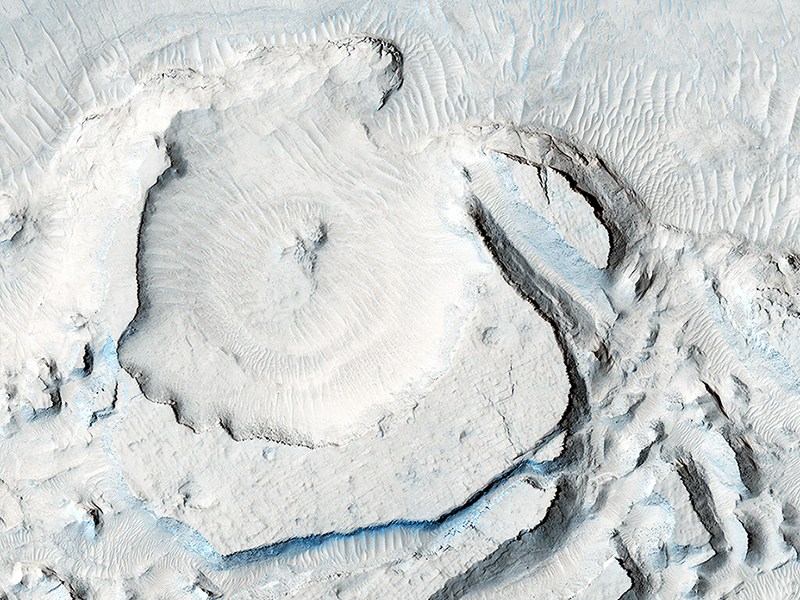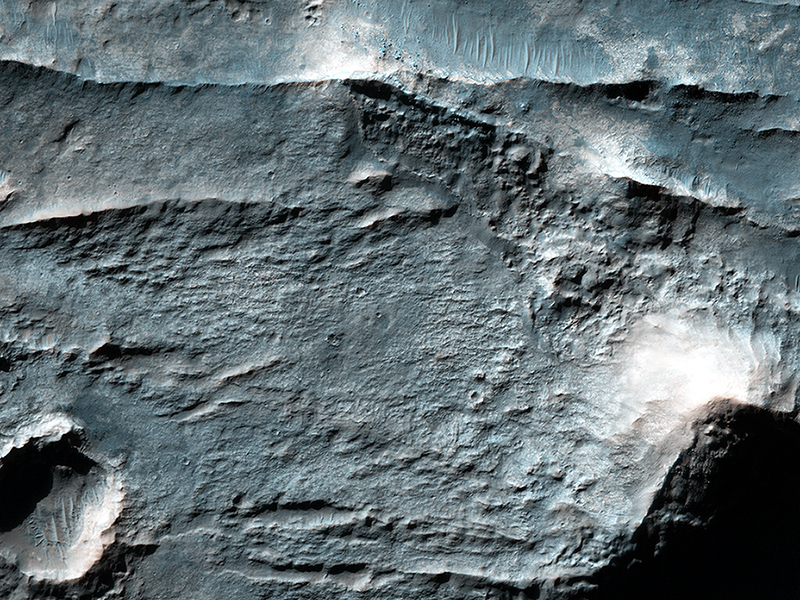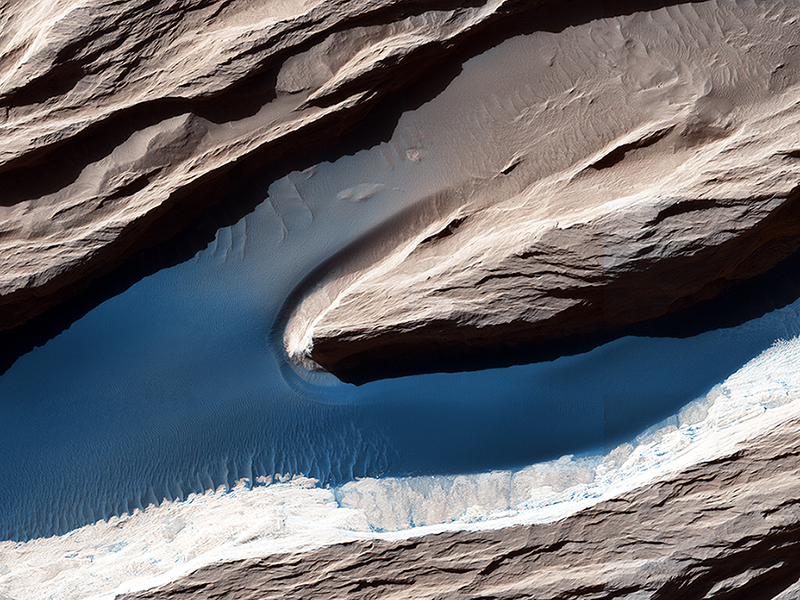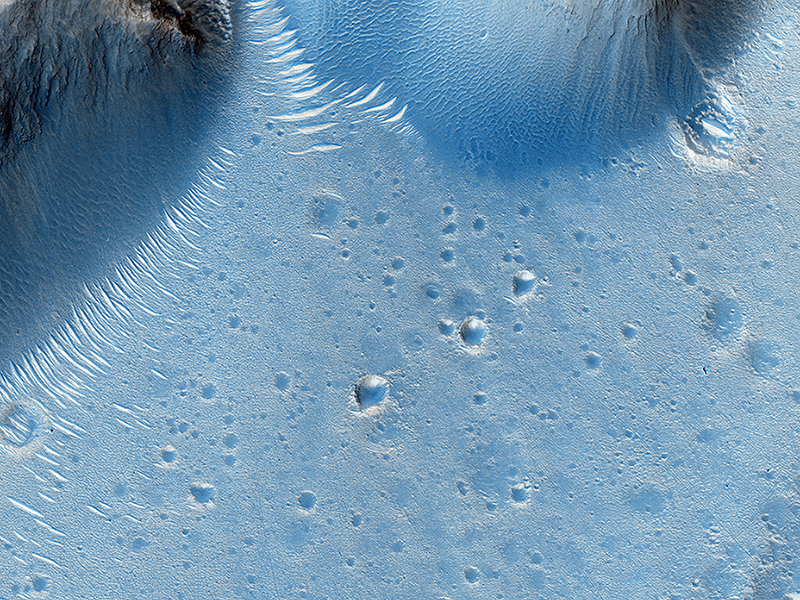Sharon Wilson wrote:Rounded Mounds in Northern Arabia Terra (ESP_043834_2160) (HiClip)
These rounded, mysterious mounds occur along the floor of a depression in northern Arabia Terra. The mound surface has many parallel troughs that contain light-toned transverse aeolian (e.g., formed by the wind) ridges oriented perpendicular to the trough walls.
The resolution of this image will help assess the nature and grain size of the sediment that makes up these mounds and whether layering is present, ultimately helping to constrain the environment in which these mounds formed.
This is a stereo pair with ESP_043201_2160.
Cathy Weitz wrote:Inverted Terrain in Eridania (ESP_043946_1415) (HiClip)
The Eridania Basin is thought to have once contained a large sea. This image shows the Gorgonum Basin, which lies along the eastern edge of Eridania.
Along this eastern boundary, the terrain is being eroded away to expose light-toned altered material, including clays. There are also linear ridges and inverted channels. The channels and ridges are now inverted because they are composed of material that is harder than their surroundings (e.g., cements) so as erosion removes the softer materials, the harder rocks within the channels and ridges remain.
The ridges and channels are interpreted to have formed by water flow, either along the surface (channels) or in the subsurface (ridges), providing clues to the water history of Eridania.
Candy Hansen wrote:Wind at Work (ESP_044000_1750) (HiClip)
Wind is one of the most active forces shaping Mars’ surface in today’s climate. The wind has carved the features we call “yardangs,” one of many in this scene, and deposited sand on the floor of shallow channels between them.
On the sand, the wind forms ripples and small dunes. In Mars’ thin atmosphere, light is not scattered much, so the shadows cast by the yardangs are sharp and dark. (Note: The cutout is not map-projected, so approximate north is down).
Ross Beyer wrote:A Possible Alluvial Fan (ESP_044388_2160) (HiClip)
This image shows the northern rim of a crater in Deuteronilus. At the northern end, we see the crater rim and ridges inside and below that rim. A channel set is entering from the west and passing through a notch in a ridge. Topographically below that notch, overlapping lobes spread over the crater floor.
Fan-shaped lobes likes these are also in the desert southwest of the United States, and are called “alluvial fans.” They are caused when streams that carry sediment in a confined channel open up onto a plain or wide area, and deposit their sediment just outside of the channel mouth.
This is a stereo pair with ESP_028274_2160.
Credit: NASA/JPL-Caltech/University of Arizona
<< Previous HiRISE Update



